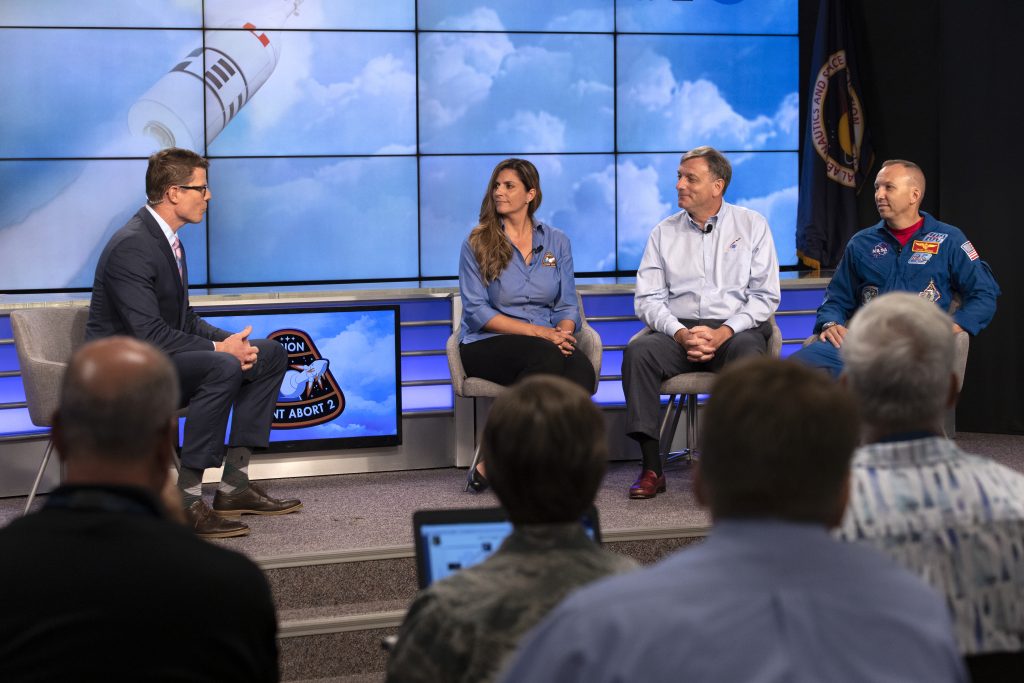Orion will help pave the way for Artemis missions with astronauts to the Moon and then Mars.
“This test is extremely important,” said Mark Kirasich, Orion program manager. “Our Launch Abort System is a key safety feature of the spacecraft — it will protect the crew members who fly onboard Orion during the most challenging part of the mission, which is the ascent phase.”
Ascent Abort-2 will verify Orion’s abort system can pull the crew module away from an emergency during its ascent to space. The two main objectives: execute the abort by demonstrating it can be completed end to end, and collect key data. There are approximately 900 sensors — including temperature sensors, pressure sensors and microphones —located throughout the vehicle.
At liftoff, the booster will provide about 500,000 pounds of thrust. It will take 55 seconds to ascend to 31,000 feet, traveling more than 800 mph, at which point the abort will be initiated and the abort motor will ignite. Also igniting will be the attitude control motor, which provides steering.
Twenty-seven seconds after the abort, the jettison motor will ignite, pulling away the Launch Abort System from the crew module. The crew module will then free-fall and descend back to the ocean. As a backup communication system, 12 ejectable data recorders eject into the water in pairs. The highest altitude reached will be about 45,000 feet.
“It’s certainly a very exciting test for us tomorrow because it is so important,” NASA astronaut Randy Bresnik said. “The neat part is the next time this whole Launch Abort System flies, there will be crew underneath it in Artemis 2.”

